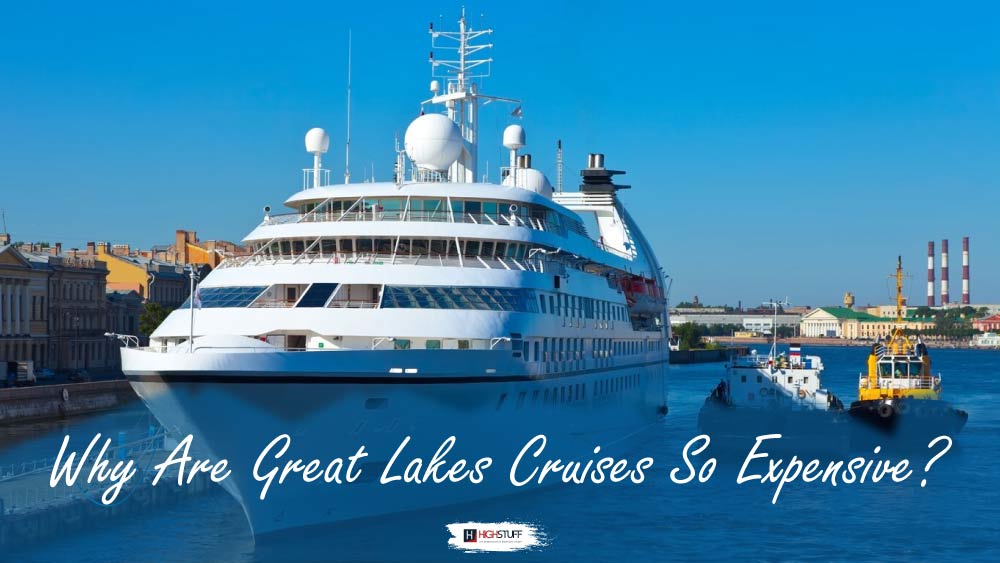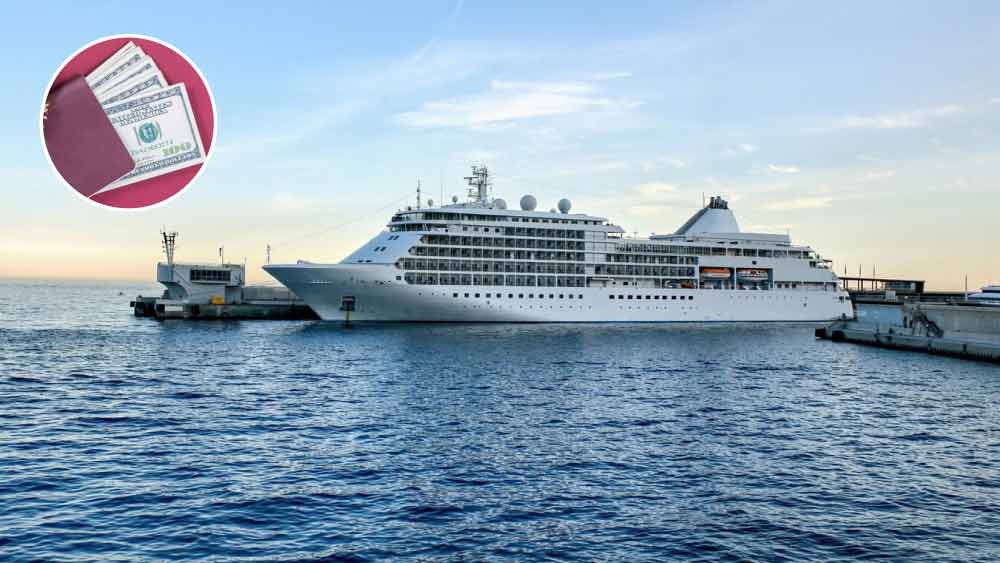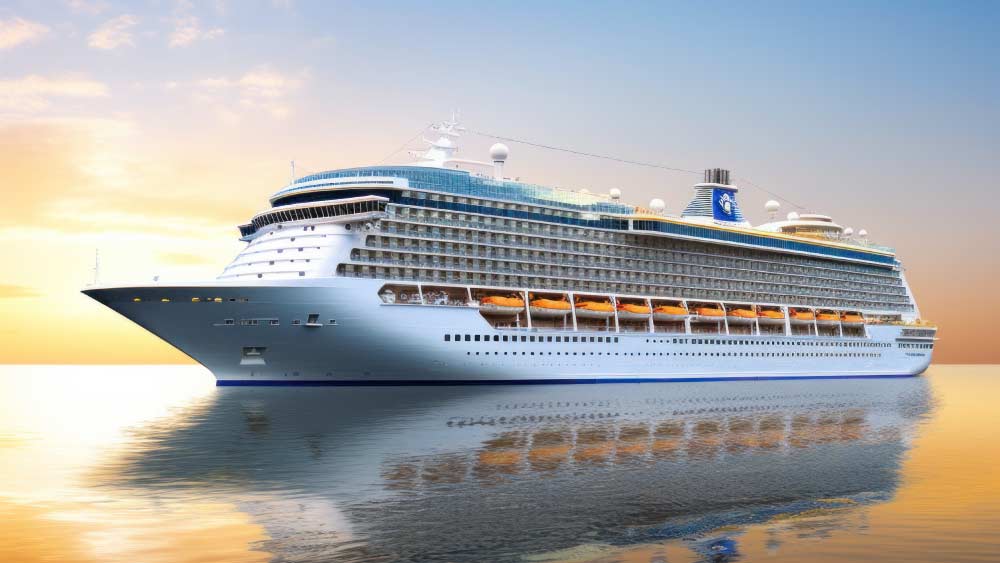Reasons Why Are Great Lakes Cruises So Expensive? Mystery Unveiled

The mesmerizing landscapes around the Great Lakes present you with an unparalleled North American experience. Embarking on a voyage across these lakes allows for a luxury exploration of the surroundings and a visit to noteworthy locations such as Toronto, Cleveland, Detroit, and Chicago. Nevertheless, the pricing of Great Lakes cruises might catch you off guard when contrasted with oceanic counterparts. These cruises tend to be quite expensive So, what contributes to this high cost? Let’s understand why are great lakes cruises so expensive and explore ways to secure one at a significantly lower initial price.
What Are The Great Lakes?
A Great Lakes cruise ship takes you to explore North America’s five premier freshwater wonders. These immense lakes Superior, Michigan, Huron, Erie, and Ontario straddle the U.S.-Canada border. A Great Lakes Cruise offers breathtaking scenery, lavish accommodations, and captivating stops like Chicago, Cleveland, Detroit, and Toronto. However, this exceptional experience comes at a substantial cost, making it a lavish adventure.
How Much Do Cruises Cost?

Most cruises exploring the Great Lakes usually require a minimum investment of $5,000 per individual for durations ranging from 7 to 10 nights. This breaks down to a minimum of $500 per person for each night.
Similar to sea voyages, there are diverse cabin categories that might incur considerably higher expenses, including luxurious accommodations.
The range of cabin categories isn’t as extensive as what you’d encounter on a sea journey – the concept of interior cabins isn’t prevalent on these vessels due to their smaller size, with the primary focus being on appreciating the scenic surroundings.
However, opting for an elevated deck with an enhanced vista comes at an additional cost. Concurrently, a more spacious accommodation like a suite, demands an investment starting at a minimum of $10,000 per person.
How Much Great Lakes Cruises Cost in 2024?
Here are some budget-friendly options for Great Lakes cruises from various cruise line websites:
- Viking Cruises – 7 nights starting at $5,860 per person
- Ponant – 7 nights from $5,480 per person
- American Queen – 10 nights at $5,489 per person
- Pearl Seas – 7 nights priced from $5,350 per person
These Great Lakes cruise rates align more closely with luxury river cruises, providing a comparable experience. Instead of navigating the Mississippi or European waterways, your journey unfolds on Lake Erie, Lake Huron, Lake Michigan, Lake Ontario, and Lake Superior.
You must have noticed the US-based cruise lines on the list. And like many other travelers, you must be thinking: Why is American Cruise Lines so expensive? There are several reasons for that, like their high-end services, intimate cruise experience, luxury accommodations, and following strict American laws and regulations.
Why Are Great Lakes Cruises So Expensive?
The increased price of Great Lakes cruises stems from their restricted operational season, dependence on compact vessels, offering distinct experiences, and featuring multiple port visits and extra engagements.
Despite the notable factors mentioned, it’s crucial to acknowledge additional elements that make it the most expensive cruise.
1. No Staterooms Inside:

Ocean cruises may appear inexpensive initially because they advertise interior room rates. However, most prefer rooms with views or balconies, substantially increasing the cost. Great Lakes cruises, devoid of interior staterooms, begin pricing from rooms with a view.
When comparing exterior room costs on ocean cruises to the starting rates of Great Lakes cruises, the price discrepancy isn’t as significant as it might seem.
2. Limited Operating Period:
Great Lakes cruises command higher prices due to their limited operating season, dictated by the seasonal accessibility of the St. Lawrence Seaway, open from late March to early December.
Typically operating between May and September, this exclusivity enhances demand, enabling companies to increase prices substantially. The popularity of these summer cruises, coupled with limited availability, results in a willingness among customers to pay premium rates for this sought-after experience.
3. Ships are Quite Compact:
Due to size restrictions imposed by navigating the Great Lakes and St Lawrence Seaway, ships are limited to 740 feet in length and 78 feet in width, accommodating a maximum of around 400 guests. The constrained capacity, while enhancing crew-to-passenger ratios for superior service, also contributes to increased prices.
The economic principle of scale dictates that fixed costs, like fuel, port fees, and wages, spread over fewer passengers result in higher per-person cruise costs.
Despite this, the limited capacity generates higher demand, often leading to sold-out cruises, allowing cruise lines to justify slightly elevated prices for an enhanced premium experience.
4. A limited Number of Competitors:
Amidst the vast ocean cruise market, intense competition prompts aggressive marketing and price wars. In contrast, Great Lakes cruises, with only a few operators, lack the same rivalry pressure.
Unlike ocean counterparts, they can avoid aggressive pricing strategies, focusing on maintaining profitability without the need for cutthroat competition, given their limited competition on the Great Lakes.
5. More Crew Per Passenger:
Great Lakes cruise ships maintain a higher crew-to-passenger ratio than ocean-going vessels due to their smaller size, requiring more staff for comparable service.
Small ships may have 50-60 crew members, while large ocean vessels host over 400. This staffing dynamic enhances service quality, as more staff caters to a smaller clientele, elevating the overall experience.
6. Better Food Quality:

Great Lakes cruise food surpasses ocean-going vessels in quality. The smaller ship allows kitchen staff to concentrate on a curated menu, some made to order.
This contrasts with mega-ships juggling up to 300 dishes for the masses, ensuring fresher, superior cuisine. Naturally, this elevated dining experience is reflected in the overall cruise cost.
7. Expensive Operations:
Operating cruises on the Great Lakes prove costlier for cruise companies due to the necessity of specialized ships for icy conditions, elevated labor expenses, and compliance with regional environmental regulations.
The extended distances between ports, coupled with challenging weather, lead to increased fuel consumption, a significant factor in the higher costs.
Unique characteristics of the Great Lakes result in high fees for port docking, and additional rules and inspections further contribute to expenses, prompting cruise companies to allocate funds for relevant port fees to ensure legal compliance.
8. Attracts an Older Demographic:
Great Lakes cruises, a coveted experience for retirees ticking off their bucket list, attract wealthier patrons unhesitant about costs. In contrast, ocean cruises appeal to younger demographics and families with comparatively limited disposable income.
9. Crew Members Earn Higher Salaries:
Great Lakes cruises, confined to the United States, follow US labor laws, necessitating higher salaries for American crew members. In contrast, international cruises, often hiring from lower-wage countries, enjoy cost advantages. The resultant increased payroll for US crews contributes to elevated ticket prices for Great Lakes cruises.
10. Enrichment, Entertainment, and Excursions
Like their larger ocean-going counterparts, Great Lakes cruises often include entertainment. Given the elevated caliber of cuisine, crew, and accommodations available, it is no surprise that the entertainment and enrichment activities for passengers will also be high-quality.
Some cruises will arrange for educational lectures, to teach interested passengers about the history and scientific importance of the Great Lakes. Others may hire experts to lead crafting hours and culinary demonstrations to occupy passengers during sailing hours.
Carefully planned excursions off-board are also available, with visits to Milwaukee, Holland, and Mackinac Island being the norm for most cruises. Guests can spend their days exploring and collecting unique souvenirs before retiring to the ship for the evening, when there is often entertainment in the form of singers and musicians for guests to enjoy while dining.
Suggestions For a Budget-Friendly Great Lakes Cruise

Should a Great Lakes cruise be a longtime aspiration slightly beyond your financial reach, fear not! One handy tip is to know the best time to go on a cruise. It can significantly affect your overall expenses, as prices vary depending on the season. Following are some suggestions that might assist you in securing an economic arrangement for your Great Lakes cruise.
1. Stay Open to Changing Dates:
If your travel dates are flexible, there’s a good opportunity for cost savings on honeymoon cruises around the Great Lakes.
The climate might not be as favorable, as a compromise anticipates a significant drop in temperature during that period. However, this may not be an issue for you, and you can still enjoy the breathtaking scenery and captivating destinations, even if an additional layer is needed for comfort.
2. Get a Reliable Travel Agent:

A cruise booking specialist frequently has exclusive access to special offers and discounts not accessible to the broader audience. It’s a prevalent misunderstanding that the optimal way to secure favorable rates is by directly reserving with the cruise company. In truth, cruise companies often delegate the reservation procedure to travel specialists, granting them advantageous rates for clientele.
3. Plan and Book Early:
Cruise companies often offer special deals for reservations. Planning your Great Lakes voyage well in advance is a great strategy to take advantage of these savings. If you are an avid traveler, we are sure you always book in advance. Additionally, because of the high demand for Great Lakes trips, you may find that options are frequently limited.
Moreover, always research the best places to cruise by month and plan your vacation accordingly to get the most out of every destination.
4. Watch for Last-Minute Cruise Deals:

While infrequent, late-breaking deals present a great opportunity to experience a budget-friendly Great Lakes cruise. If you’re interested in such a cruise and can adjust your travel schedule, consider signing up for email notifications and keep an eye out for exclusive promotions. Accepting flexibility in your travel dates may lead you to discover an extraordinary last-minute cruise deal.
5. Pick a Room Near the Middle of the Ship:
Cabins located nearer to the ship’s boundaries typically come with a higher price tag, so opting for a central spot might lead to some cost savings, albeit with a tad more noise. However, it’s worth noting that Great Lakes cruises generally lean toward a quieter atmosphere rather than a boisterous one.
Final Words:
Though Great Lakes voyages might come with a higher price tag compared to certain alternative cruise options, there are strategies to cut down costs during your journey.
Opting for off-peak periods, engaging a travel advisor, and making prudent decisions regarding your accommodation can lead to significant savings on your Great Lakes cruise. Additionally, the distinctive and stunning cruising experience provided by the Great Lakes unquestionably justifies the additional expenditure.
As a keen outdoor adventurer, you may also want to explore these best resorts in Hawaii.
Why are Great Lakes Cruises So Expensive – FAQs
Great Lakes cruises peak in popularity and cost during the warmer months of June-September. Discounts are common in the fall or early “wave season.” While last-minute bookings may save on cruise fares, combined costs with airfare and accommodations may offset savings. Consider traveling in April, May, or October for potential cost savings.
Cruises on the Great Lakes often come with a higher price tag compared to ocean voyages, primarily because of their constrained operational season, utilization of compact deluxe vessels, provision of distinctive encounters, and incorporation of various land-based escapades and special port stops.
Great Lakes cruises often get overlooked due to their proximity to home for US residents and perceived high costs compared to more exotic destinations. However, the appeal is growing as people discover the vast beauty of the largest freshwater lakes on Earth. These cruises provide access to iconic cities like Chicago and Detroit, offering a unique exploration of North America’s less-traveled side. Despite the apparent expense, many find the experience invaluable.

news via inbox
Sign up and never miss out on the latest news and updates at HighStuff




